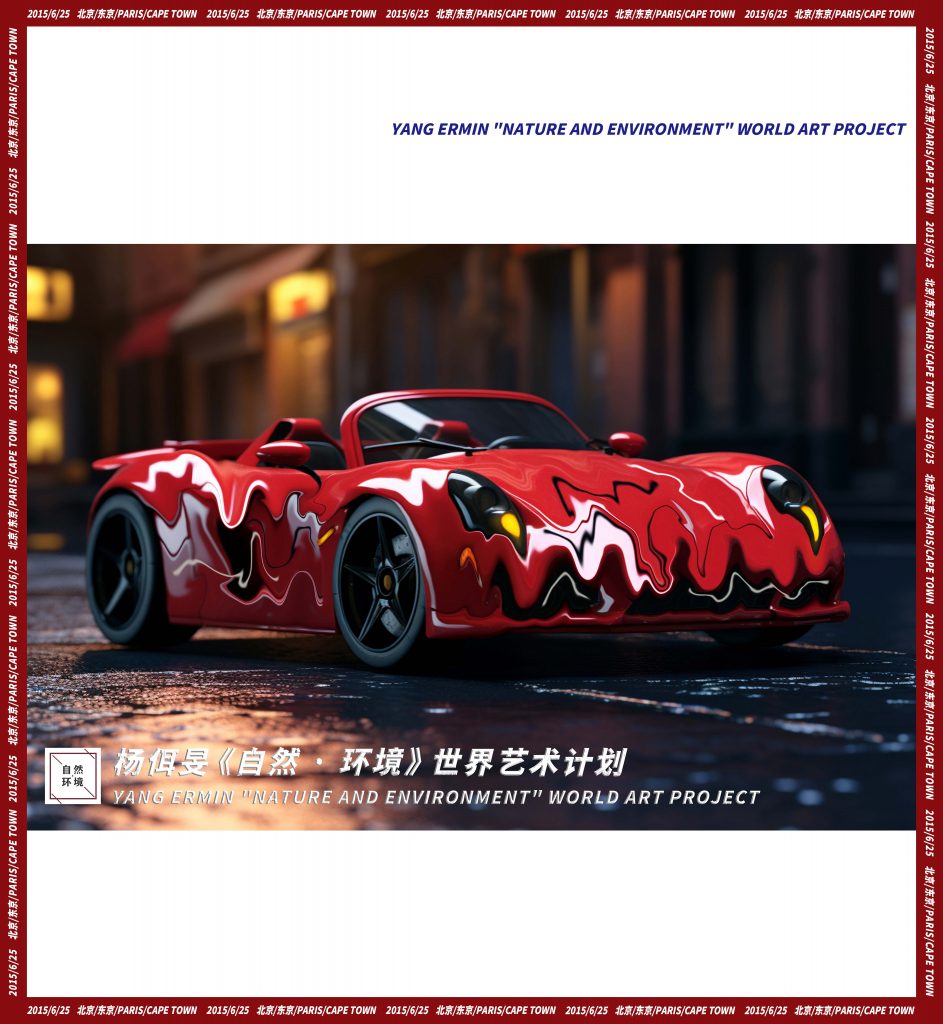
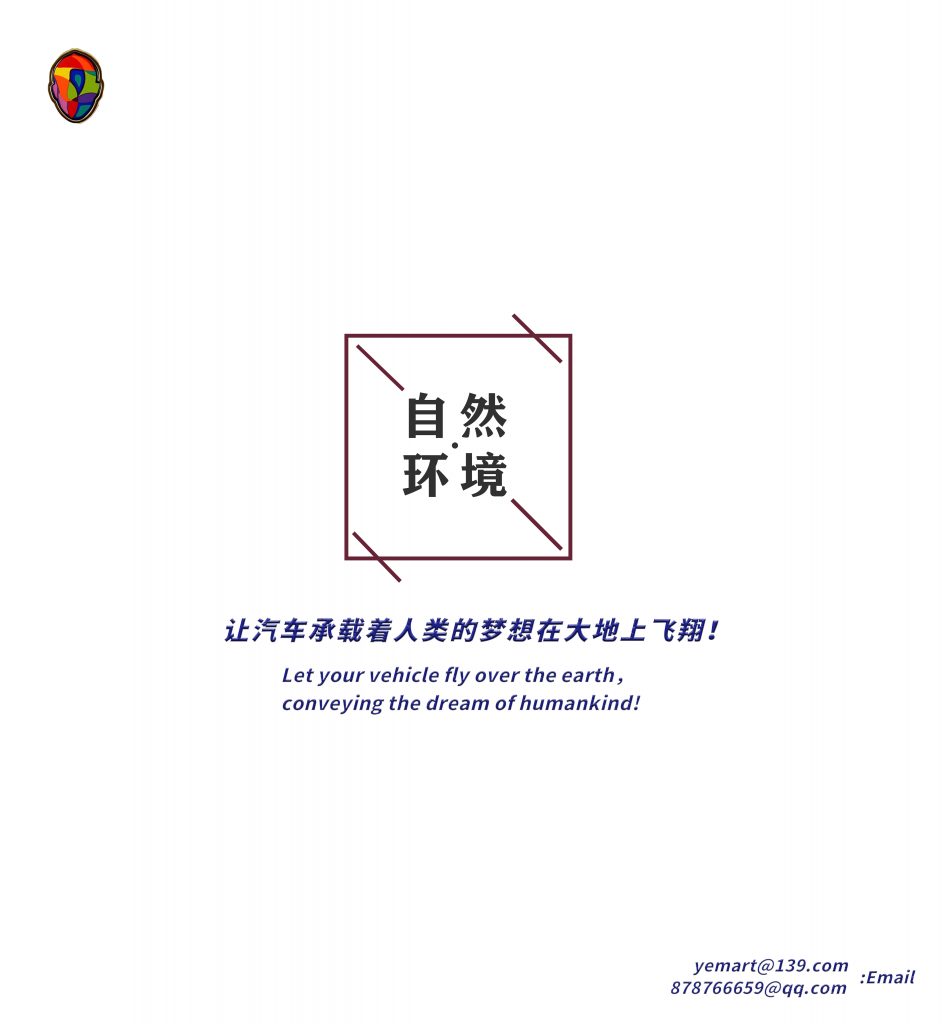
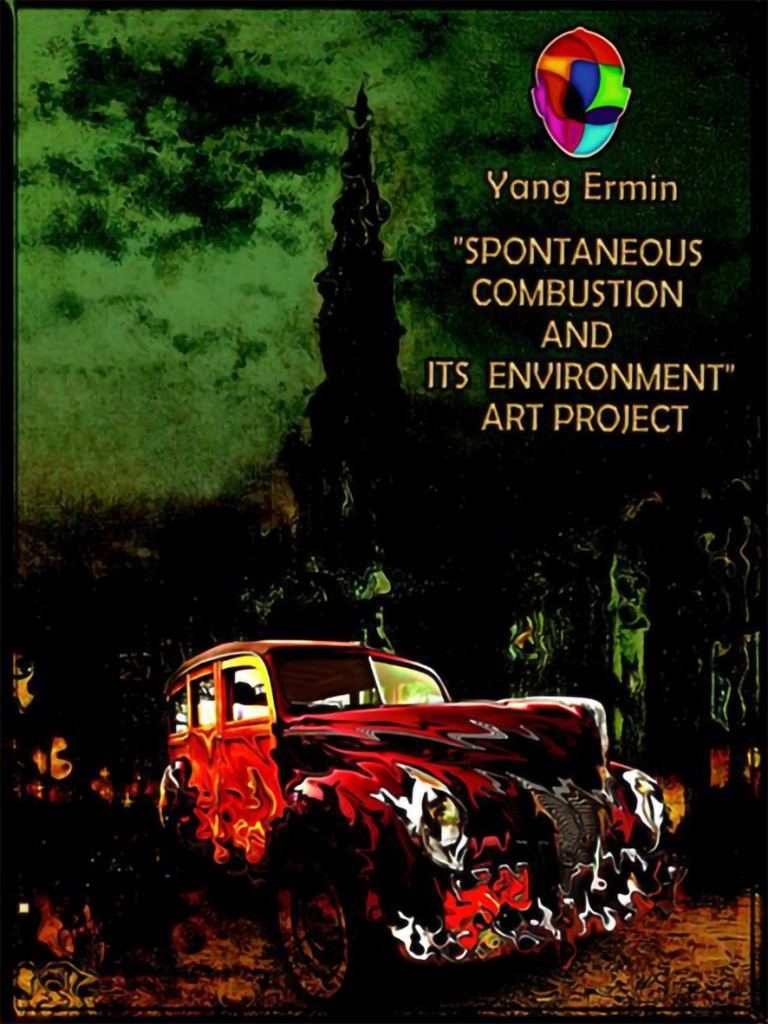
The “Nature & Environment” is a form of art performance held in t real locations. One of its manifestations was displayed on motor vehicles in Wangfujing pedestrian street in Beijing, after Dr. Yang pre-designed and custom-made film on volunteers’ cars. The shiny and cool colors melted with the car body creating new patterns, for example, with flames that gave cars a sizzling hot look. The project sends the message of global warning as displayed in the melting patterns that present a relation between the cold rationality of industrial civilization as a form of explosive selfcombustion. The project has also been performed in some buildings, such as Fēnghuo3tái (Beacon tower).
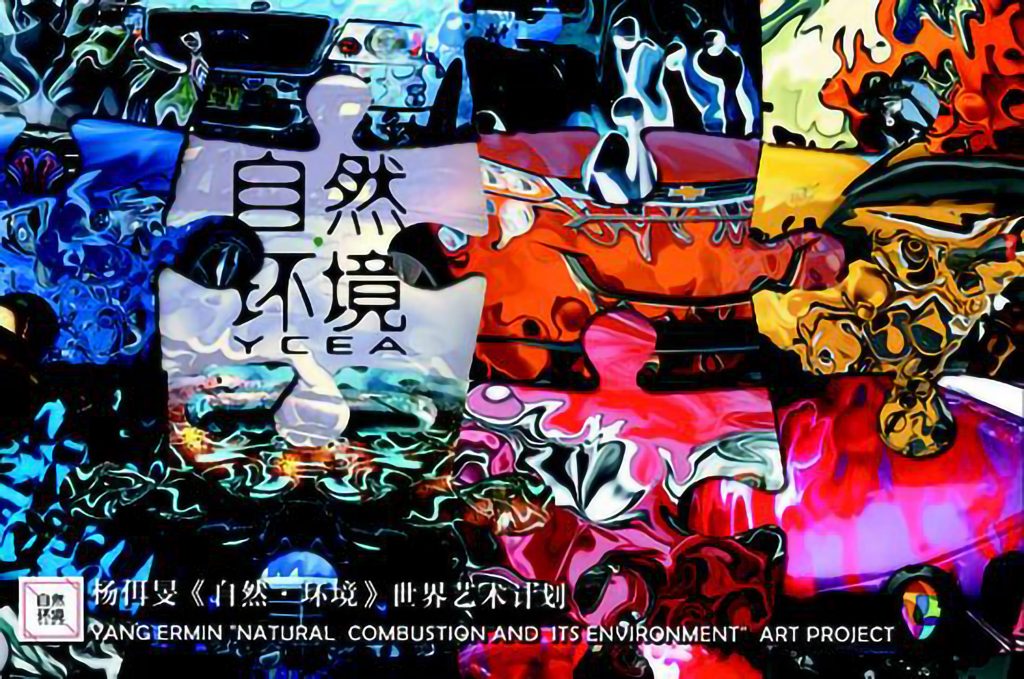
Dr Yang’s idea originated during one of his stays in Tokyo, over a decade ago, where the orderly flow of cars created a deep impression. Cars as so much part of human lives, not matter where in the world. Whether driving through cities, villages or the dessert, cars provide a mobility that enables global connections. As an artist, Yang wanted to make something out of it, and using canvas, stones, wood and Xuānzhǐ (Chinese rice paper) je developed a first project that in 2014, after Yang’s stay in the United Stated, materialized in a display in Beijing in an attempt to report about air pollution as serious problem. Yang even felt he could not return home any more, as all the reports pointed to the idea of pollution penetrating through the coating of body cells, becoming very damaging. That year, during Chinese Chūnjié (Spring Festival), Yang came up with the idea to create this project in order to channel concerns and attention to environmental issues and ignite in-depth thinking and awareness of our shared human future. The idea was inspired in a childhood memory from the early 1990s, when he was a college student doing fieldwork at
Héngshān Mountain (恒山). There he saw an underground coal bed which was burning, and it gave the illusion that the whole Héngshān Mountain was burning. The fire metaphor befitted his project in order to put in relation Zìrán
(nature 自然) and Zirán (self-burning 自燃), a theme intertwined with perception and feelings of both pain and pleasure. Yang envisioned his project as covering various locations in the world, from mountains, fields and deserts to streets in villages and cities, drawing attention to climate warming through the self-burning-melting metaphor.
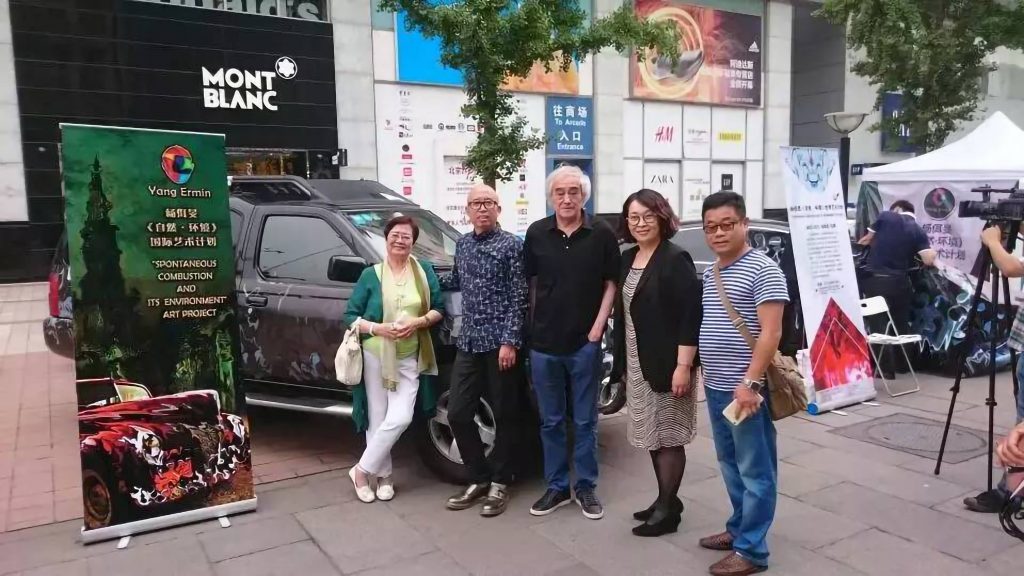
The “Nature & Environment Project” expands modern performance art into “Art + Behavior + Conception + Environment protection”, seeking to promote an artistic environment protection philosophy out of Yang’s own ideas, where he also wants to go beyond the already done to create something new. In the Chinese case, this is particularly difficult, as in China there seems to be more appreciation for tradition and things from the past, rather than for any new surprises and challenges. For this reason, it is important for Yang to open these challenges and innovations to Chinese society, a community that, according to Jack Challoner from the British Museum of Science, has contributed to key inventions in the past and, although in recent years its innovative pace has slowed down, Yang trusts that it will become reactivated. Nowadays China is the first auto-producer in the world. However, if when writing a history of automobile technology, you find over thousands inventors coming from countries such as Europe, Japan or the USA, and hardly no Chinese. Yang claims that art should not be something high up (for the elite) and therefore lonely (孤
高). He wants to make art ‘hot’ by bringing it closer to the people ( 高处不胜寒).
In the case of cars, each car design is unique and different but, at the same time, it is part of a larger project. The designed film is shipped to volunteers worldwide. One thing bothered Yang. The fact that the surface area might not be made smooth when installed on the car. Particularly because volunteers might have no experience in attaching films on cars. However, Yang also felt that the lack of smoothness fitted better with the original idea of melting nature.
Parts of the film could also be torn away in order to add other layers to personal taste and satisfaction.
After its launch in Beijing, the project was displayed in Los Angeles, Paris, Tokyo, Barcelona, Cape Town, Berlin and promoted to other cities in the world.
How to volunteer and get involved:
No matter where you are, as long as you send the information about your vehicle type and its color via e-mail, mail or telephone to the “Nature. Environment” Art Project office (physical mailing address provided below), the artist will custom design melting effect for your car a set of Peal-and-Paste film and mail to the address you provide. The set of Peal- and-Paste film are gorgeously colorful, they are visually appealing, easy to paste on, and they peel off easily without damaging car paint; this film colors won’t fade for up to one year. All we ask of you is this: after you receive the car film, paste it on your car, take a picture of the finished car and post it online together with illustration in your mother tongue. We welcome interested car-owners, translators of international languages, designers, effect producers, and vehicle consultants, automobile producers and more. Anyone can participate in the Nature. Environment Project. The shiny stickers are not damaging of your car!
“Nature. Environment” Project, ArtsBJ Network
Address: Chaoyang district, 15 Xia Guang Li, Xiao Yun Center,
Building B, Suite 710, Beijing, China. 100000
Email:yemart@139.com,878766659@qq.com
